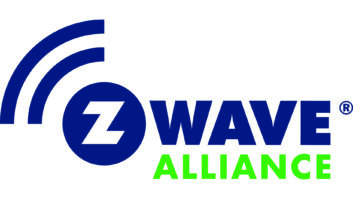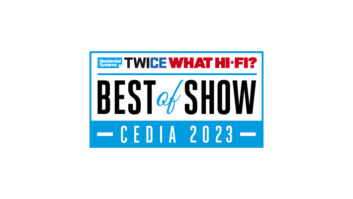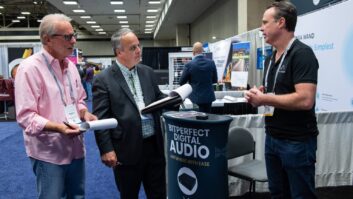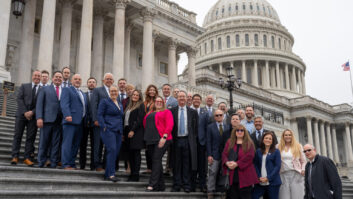
As the custom-install industry prepares for next month’s CEDIA Expo in Dallas, TWICE asked CEDIA management to comment on the state of the industry and the prospects for this year’s event.
Dave Pedigo, CEDIA’s senior director of learning and emerging trends, had this to say in response to emailed questions:
What’s new at October’s CEDIA Expo?
The number of overall exhibitors is up overall, and we are up in double digits for first-time exhibitors. IoT products are certainly behind some of the growth, but we are seeing a very healthy variety in all of our exhibitor types.
In terms of education, we have 53 new courses this year and a total of 113 sessions. There are many topics broken down into specific categories: business growth, operational excellence, emerging trends, forging alliances and technical excellence.
For the third consecutive year, we are seeing strong demand for business classes, as well as IoT, immersive audio, Ultra HD/4K and HDbaseT. One of the most exciting offerings will be CEDIA Talks, scheduled for Thursday, Oct. 15, at the CEDIA Booth. These sessions are geared toward getting attendees to think about the future home experience and where we are headed.
There are five sessions on Thursday and are headlined by Geoff Mulligan of the IPSO Alliance and creator of 6LoWPAN, who will discuss the privacy and security of the Home IoT. Sonos’ director of platform strategy, Michael Papish, will discuss the future of audio in the home.
Where is the show going next year?
Back to beautiful Dallas, Texas.
Which industry segments are growing the most?
We are getting our data back in the next few weeks regarding the state of the industry, and will deliver those results at Expo at the CEDIA Booth on Friday, Oct. 16. However, over the past few years, we have seen a resurgence in home theater/media rooms.
Since 2013 we have seen increases in both the number of projects and average price per project. In fact the average revenue for a home theater project grew 9.8 percent year over year from 2013 to 2014. The same can be said for distributed audio, which — despite the fears of many regarding commoditized distributed audio — saw a 12 percent increase in average price and a 42 percent increase in the number of jobs during the same timeframe. Home automation and lighting control are also doing very well. Home automation doubled the average number of installations, and lighting control saw a 13 percent increase in average sales price in 2014.
What successful strategies have installers pursued in recent years?
This is a tricky question. We do know that new home construction has slowly gained a larger percentage of jobs for integrators. In 2012, only 31 percent of work was new construction, and by 2014 we estimate that to increase to 36 percent. We will have solid numbers for 2014 and projections for 2015 at Expo. As for going back to existing customers, that was what kept many integrators going through the recessionary period, and it is still a solid business tactic (keeping clients for the life of the business).
However, with an improving economy and increased competition, many integrators are looking to expand their customer base. However, it is important to note that in our research, we have found that there is a measurable number of integrators not actively looking for new customers, as either their pipeline is full or word-of-mouth is enough to keep them going.
What has been the impact of DIY home automation on the custom business?
There have been concerns about the DIY market for the past few years, yet based on the numbers, it hasn’t harmed the industry. Average gross revenues have increased over the past three, and the average price per project has increased as well. Part of this could be attributed to increased awareness and demand based on DIY products, which could be taking market share, but for now the numbers don’t bear out.
Has Ultra HD TV had a big impact?
We have seen an increase in the number of Ultra HD/4K displays sold as 25 percent of TV sales by integrators in 2014 were Ultra HD/4K. However, it cannot be understated that the lack of Ultra HD content is being noticed by consumers. The delay of an Ultra HD Blu-Ray spec has been noticed, and many wonder if it’s too late to affect the market, as streaming is becoming the de facto viewing preference. We will see how Ultra HD Blu-Ray players sell during this holiday season.
As for HDR, it is still a little too early for HDR to impact the industry. The standards are just being nailed down, and hardware is not readily available. I would expect that a year from now, HDR will be much more solidly entrenched in the market. HDR and wide color gamut (DCI P3 and Rec. 2020) have high potential in my opinion and will be major players in content in the upcoming few years.
Have Dolby Atmos and DTS:X had a big impact yet?
They are still fairly nascent as not much content is available quite yet. However, I expect to see a great number of immersive audio receivers/processors at Expo. Immersive audio, as in Ultra HD, will also require content before full market adoption.













